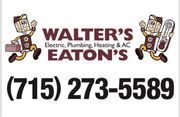3 Ways to Safeguard Your Electronic Devices

Every electronic you use is designed to handle a specific level of voltage. However, conditions like thunderstorms or power grid malfunctions can send a power surge to your electric devices. You may be able to avoid calling an electrician if you know how to protect your electronics.
How to Protect Your Electronics From Power Surges
1. Use a Standard Surge Protector
Not to be confused with a power strip—though some strips are also surge protectors—this is a go-to solution to protect your electronics. Check on the device’s packaging to ensure it’s built to protect from high-volt surges. A surge protector will either block or short any voltage over the allowable threshold, so the device plugged into it won’t be affected.
2. Use a Surge-Proof Outlet
Since surge protectors are subject to a few nanoseconds of delay, many people opt to surge-proof their outlets instead. Those who have struggled with surge protectors that have failed in the past also may opt to upgrade their outlets. This requires custom hardware to be installed so that abnormal voltage can be detected and blocked before it impacts connected devices. An experienced electrician would be the best choice to install this outlet for you.
3. Get Service-Entrance Surge Protection
This step is the most extensive of all, requiring the installation of a surge protector where the electrical system connects. A power surge doesn’t have to impact your outlets directly to cause damage. Consider devices like switches, electrical meters, and even heating systems that are hardwired outside of the building’s indoor connection points. Connecting a surge protector to the incoming electrical line is a wise idea, but you’ll likely need to call an electrician.
Walter's - Eaton's Electric, Plumbing, Heating & AC is your go-to source when you need an electrician in Ellsworth, WI. Their organization has provided quality services for over half a century, so you’re in good hands when you contact them. To get in touch, call (715) 273-5589.
About the Business
(2 reviews)
Have a question? Ask the experts!
Send your question

